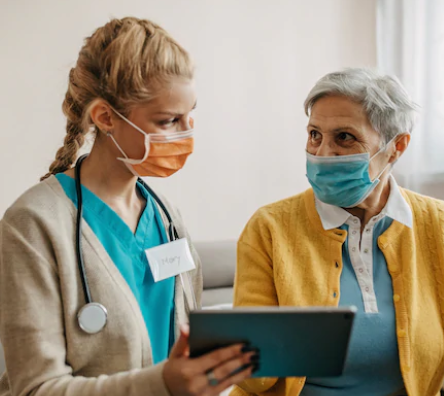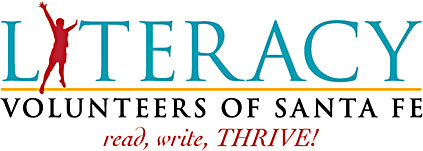
Fear of covid-19 exposes lack of health literacy
The problem isn’t about reading skills or college education. It’s about whether you know how to ask a doctor the right questions, read a food label or understand medical terms.
A Michigan library had to ask patrons to stop microwaving books to kill the coronavirus after noticing returned books with scorched pages. The Cleveland Clinic issued a public warning about the danger of using vodka concoctions as a hand sanitizer when recipes started to circulate.
Then came the surge of calls to poison control centers about bleach. The Centers for Disease Control and Prevention had to double-down on warnings not to drink it or rinse food in it.
One in five people struggle with health information, says Michael S. Wolf, director of the Center for Applied Health Research on Aging at the Feinberg School of Medicine at Northwestern University.
“It’s easy to misunderstand [medical information],” says Wolf, who is also founding director of the medical school’s Health Literacy and Learning Program. Some will be too ashamed to say so while others won’t realize they missed a critical detail.
The people most likely to have low health literacy include those dying in greater numbers from covid-19: older adults, racial and ethnic minorities, nonnative English speakers, and people with low income and education levels.
“Covid has brought to fore the vast inequities in society,” says cardiologist Jared W. Magnani, associate professor of medicine at the University of Pittsburgh School of Medicine. If you don’t understand words such as “immunocompromised” or “comorbidity,” for instance, you miss cautionary information that could save your life.
But low health literacy cuts across all demographics, stresses Alison Caballero, director of the Center for Health Literacy at the University of Arkansas for Medical Sciences. “Given the right headache or stress about a sick child, [gaps in comprehension] can happen to anyone. When you don’t feel well, you don’t think as clearly.”
Health literacy is not about reading skills or having a college degree. It means you know how to ask a doctor the right questions, read a food label, understand what you’re signing on a consent form, and have the numeric ability to analyze relative risks when making treatment decisions.
“None of this is intuitive,” Wolf says.
Magnani has patients who don’t believe they have high blood pressure because their lives aren’t stressful. Or respond with “Great news!” when he tells them a test result was “positive.” He was lead author of a statement from the American Heart Association about overcoming health literacy barriers to improve patient outcomes.
“Most health care doesn’t occur in the exam room,” Magnani says. Misunderstandings over hospital discharge or medication instructions can undo the best medical care. Yet, nearly 1 in 3 of the 17,309 people in a study by researchers from the Agency for Healthcare Research and Quality (AHRQ) responded that instructions from a health provider were “not easy to understand.”
Wolf says he was surprised during a study on reading prescription labels by how many high school graduates could not follow medication instructions. “Being able to read the label doesn’t mean you can interpret it,” he says. “Take two pills, twice daily” was frequently misunderstood. Replacing the awkward wording with “Take two in the morning and two at bedtime” would solve that, Wolf says. Health-care professionals “need to meet people where they’re at.”
Health literacy is the best predictor of someone’s health status, some physicians maintain. Decades of research consistently link low health literacy to poorer medical outcomes, more hospitalizations and emergency room visits, and higher health-care costs. The less literate often experience higher mortality rates for heart disease and more foot amputations if diabetic. And you are less likely to wear sunscreen, maintain an optimal weight and take other health-preventive measures if your health literacy is low.
Anatomy knowledge is another gap.
To avoid misdiagnosis, Philadelphia internist Melissa G. Schiffman says she has to weigh each patient’s comprehension when they discuss symptoms. They may tell her they have kidney pain but the discomfort is lower in their back and more consistent with back strain, she says. Or a patient may be embarrassed to say “testicles” and complains of groin pain, she says.
Explaining medical risk and probability is another challenge.
“ ‘Why did you prescribe this? It says it hurts your kidneys,’ ” Schiffman will hear from a patient. “They may not understand that only a very small percentage of people may get a stated side effect.” Then there are people with heart attack symptoms who don’t go to the ER because they think covid-19 risk is worse, she says.
Over 3,000 studies found that health education materials far exceed the eighth-grade reading level of the average American, too. Beyond not using plain language (“joint pain,” not “arthritis”), texts assume the patient knows more than they do. Telling people to sanitize surfaces to kill the coronavirus means little if you don’t tell them what to use and how to do it, Caballero says. “What does it mean to practice good respiratory hygiene?” she asks. “These are not actionable instructions.”
“People don’t want to look dumb, but patients should never feel embarrassed to ask any question,” Schiffman says. “It’s not in anyone’s interest.”
Poor health literacy is no longer viewed as just the patient’s problem. The AHRQ created the Health Literacy Universal Precautions Toolkit to help physicians communicate more clearly. The American Medical Association and the National Institutes of Health recommend that patient education materials be written at no higher than a sixth-grade level. More instruction materials are using pictures and diagrams that can be easier to follow than text.
Doctors are encouraged to employ the teach-back technique, meaning the doctor asks the patient to repeat what they’ve heard rather than simply asking, “Do you understand?”
Magnani goes a step further to try to identify patients who need help. When teaching, he says, “I tell trainees that when they ask a patient if they have questions and there are none, it may be an indication that the patient doesn’t know how to ask questions.”
In addition, “health care is becoming a harder test,” Wolf says. Health billing and insurance options can be impossible to navigate. We have an aging population with more chronic conditions and cognitive decline. And more is being asked of patients such as testing their own blood sugar or blood pressure.
“The health-care system has not done its job for diverse stakeholders,” says Wolf about providing health information within everyone’s grasp. “We can’t put this [burden] in the lap of the patient.”
The Washington Post
By Eve Glicksman
